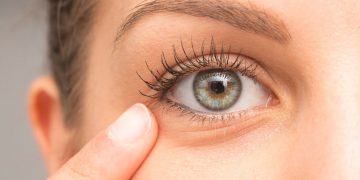Scars are always a big headache. Not to mention about scars are present in the highly exposed areas in our body. The immediately grab people’s attention. Worse are the keloid scars.
What is Keloid Scar?
To keep it simple, let us consider this as a big daddy of all scars. Many people approach a dermatologist with this problem and plead to them to cure it some way or the other. But these scars appear little different from normal ones. They appear slightly swelled and are usually big.
What is the Reason and How to Cure it?
Keloid scars can appear on anyone. But, its occurrence is slightly high on people with a dark complexion. It is quite common among people living in southern part of India. It can happen to both men and women.
How do Keloid Scars form?
Skin undergoes a considerable damage due to wounds, pimples, piercing, and due to many other reasons. Our body manufactures a protein called collagen. This collagen surrounds the region of the skin that undergone damage and helps to heal it. Commonly, these scars that are formed due to skin damage naturally disappear after a certain time duration.
But scars that take the form of keloid doesn’t disappear. Unlike normal scars, these scars appear little bulgy and big. Though keloid scars don’t affect our health in any way, they ruin our appearance. So many people want to get rid of it somehow.
Signs of Keloid Scars
- It appears little bulgy from the skin surface. It is usually pinkish in color.
- It appears little big from the surrounding skin surface.
- The area surrounding the scar may feel little itchy.
What can turn into a Keloid Scar
- Fire burns
- Scars left by pimples
- Scars left by chicken or smallpox
- Piercing ears or any part of the skin
- Surgical cuts
- Vaccinations
But sometimes keloid scars can appear without any of the reasons mentioned above. We call this as a spontaneous keloid scar. This scar can get passed on to next generation due to genetic reasons. Studies suggest AHNAK is the gene that plays a very big role in the formation of keloid scars.
How does the Keloid Scar Appear?
- It appears shiny
- Doesn’t have any hair growth over it
- It feels like a rubber when touched.
- Initially, it appears reddish in color, but later it turns to pinkish or brownish in color.
Is there a Treatment Available to Cure this Problem?
It is not possible to get rid of a keloid scar without any trace. There are certain types of treatment available to treat little keloid scar and make it disappear to a certain degree. But big scars are really difficult to treat. At the same time, it is easier to treat a keloid scar in its initial stages.
Most common treatment for this type of scars is injecting steroids into it. This injection must be taken on a monthly cycle. Continuous steroid shots could create a vacant surface underneath the scar.
Liquid nitrogen can be used to freeze the scar. This will decolonize the scar region and make it disappear to a certain degree.
Painful Keloids
Some people might experience extreme pain in the keloid scar region. These people must wear a pressure belt in the region for a duration of three months. Modern silicon belts fetch good results.
Additionally, cryotherapy or botox injections can be used to treat this condition.
Can it be Prevented?
We cannot completely prevent the occurrence of keloids. But people with genetic vulnerability for keloid should prevent body piercing, unwanted surgeries, Tattoos, and cosmetic surgeries.
Home Remedies for Keloid Scar
Mix equal amounts of petroleum jelly and aloe vera gel. Apply this gel over the scar for 3 to 4 times a day.
Some people will have itching sensation around keloid scar, these people can mix a little sandal powder with rose water, make it into a paste and apply it over the scar before going to sleep at night. In the morning wash this area with warm water.
Further Reading:








